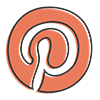complex, moral, metaphorical reasoning tied up in an hilariously funny story!
/IT’S USEFUL TO HAVE A DUCK
by Isol – Allen & Unwin, 2009
ages newborn to adult / emotional resilience, funny, imagination
Of all the gazillion things a picture book can do, the one I place most value on is: building a set of responses to ethical issues by inviting complex, moral, metaphorical reasoning.
Complexity matters a lot because understanding and embracing life’s complexities leads to compassion. It means being able to balance and respect competing interests—there’s often more than one way to do something good and more than one way to get it wrong. Complexity allows ideas to be transferred from one life moment to another.
Playing around with moral problems is invaluable—after all we’re constantly making moral judgements, even when we don’t recognise them. And moral reasoning requires a defence: we need to justify the moral choices we make. And as we work to unpack our own decisions we can better understand the moral decisions made by others, even (or especially) if we continue to disagree.
Metaphorical reasoning is what allows us to understand others. This sort of thinking goes beyond empathy—it allows us to learn and change our own lives as a result of seeing someone else’s life. (It’s crucial to understanding maths and science too.)
And the thing I value second-most in a picture book: being fun to read! It’s Useful to Have a Duck is one of the very best books I know for all of the above.
This is a concertina-style board book that begins with a boy who tells us:
“It’s useful to have a duck.”
Then we get a whole slew of reasons: “Now I ride him like a rocking horse.” “I use him for a hat.” “He can be a whistle or a straw.” And so on. Each reason includes a picture of the boy and his duck doing just that.
Then the twist! When you reach the ‘end’ of the book, it flips and the other side of the concertina pages is the duck’s perspective.
It turns out: “It’s useful to have a boy.” When the boy thinks he is riding the duck like a rocking horse, the duck says: “Now he rubs my back.” When the boy is using the duck as a hat, the duck says, “I use his head to see the view.”
And on it goes.
Here’s why I love this book so much:
It’s a deeply complex story. The boy’s interests appear to be at odds with the duck’s interests and yet both sets of needs are met. At first, we feel happy for the boy and perhaps a little concerned for the duck. Then suddenly we find ourselves happy for the duck and a little concerned for the boy! Wonderful for times when competing interests appear irreconcilable.
It raises all sorts of moral issues—is it ok to use a duck as a straw? What if the duck thinks you’re kissing it? How would you treat a duck? When the boy leaves the duck in the tub is he abandoning his responsibilities, or is he caring for the duck? Is the boy bullying the duck? Does the duck’s view of its circumstances change your thoughts? Is there exploitation happening? If so, who’s being exploited—the duck or the boy? Or is it just a beautiful synergy?
There’s a profound metaphor—or two—to be found in its reading. Perhaps the boy’s actions will spark thoughts about people whose lives we take for granted—maybe someone as close to home as a parent, or as far away as a child picking cocoa so we can have chocolate. Perhaps the duck’s view will remind us to look for good in our lives. There are so many possibilities.
The pictures are clear black lines on yellow and blue backgrounds, making it perfect to read to babies. The contrast is great for their baby eyes and parents can enjoy the humour and the complexity of the story too.
The sheer cleverness of the words and pictures gets me every time —and that first reading is just so much fun as you start anticipating the duck’s responses.
It’s pretty hilarious. The boy does shocking things like using the duck to dry his ears, but the duck doesn’t mind because it thinks it is waxing its bill! So good.
A small reading hint:
Start on the duck side and read it as though it is a regular book—don’t stretch the whole concertina out. That way it will feel like an ordinary story until the magical flipping moment!
We bought this book when it was first published in 2009, that means the youngest person in our house was 9 years old—way past the usual board book buying age. Everyone loved it then and now we read it to the next generation. It really is great for young and old.








